PENTAVITIN®
The natural moisturizing skincare ingredient PENTAVITIN® provides powerful hydration to all facial areas, visualized by new facial skin hydration color mapping technology.
Like the gut, the skin has its own unique ecosystem consisting of millions of bacteria, fungi, and viruses which make up the skin microbiota. We have long known about the health benefits of maintaining balance in the gut microbiome but when it comes to skin care, bacteria have generally been perceived as something we need to remove. This narrative is beginning to change in scientific circles. Today, the skin microbiome is increasingly thought to be the key to enhancing skin appearance – addressing the causes of skin conditions rather than just the symptoms.
DSM is a key player in microbiome gut health solutions. We offer a wide range of products within the probiotic, prebiotic, and enzyme sectors. We are also recognized industry leaders in epidermal science, especially in relation to the skin barrier – the home of the skin’s microbiota. By combining our expertise and knowledge in microbiology and epidermal science, we can create new innovative skin microbiome solutions.
So what does a healthy skin ecosystem really mean for the personal care industry? In 2018 DSM started taking a closer look. To find out more about what consumers understand and think we carried out an in-depth market-related study. In parallel, we also embarked on original scientific research to investigate the skin microbiome landscape in more detail. Our research, underpinned by our EPIBIOME BEAUTY™ approach to skin care, led to some promising discoveries about the way two of our skin care actives, SYN-UP™, which interacts with the skin, and PENTAVITIN®, our star moisturizers, that interacts with bacteria on the scalp.
Not that DSM’s journey has ended here though. The skin microbiome is still uncharted territory and we are firmly committed to increasing our knowledge further and to sharing our findings. We believe that many of the bacteria on the skin work for it rather than against it. So, for the first time in one clinical study, our scientists have sought to deepen their understanding of the complex relationship between normal, dry and oily skin, barrier function, and the skin microbiome. This research has pinpointed three of the most common bacteria on the skin and investigated their interaction with three well-established skin care actives: OXY 229 PF, SYN-UP®,and ALPAFLOR® ALP-SEBUM CB.
The skin microbiome as a beauty concept is challenging current perceptions about the role of bacteria in the skin. Our qualitative consumer research revealed that beauty influencers are receptive to the idea of the skin as a living ecosystem as this supports broader trends for more natural, holistic and healthy beauty. Regular consumers are still somewhat reticent however as the idea of bacteria as “bad” still dominates.
As new product launches pique curiosity, this view is beginning to change; and this is where the beauty industry should step in. Consumers need clear explanations now about why enhancing their skin flora is relevant to their specific skincare concerns. Above all, they want to understand which products work and how.
To help bring clarity, DSM has analyzed the current skincare market and identified four approaches to skin microbiome beauty:
removing bacteria,
prebiotic – feeding “good” bacteria,
probiotic – adding “good” bacteria,
postbiotic – adding by-products of bacteria.
At the moment, the market is generally focused on offering prebiotic and probiotic solutions. Consumers are likely to be familiar with probiotics in relation to gut health and live dairy products, although it should be emphasized that when it comes to cosmetics, products contain extracts made from bacteria rather than live cultures. Some brands take a scientific stance with products designed to address specific concerns and benefits, such as reducing wrinkles, while others place the emphasis on nature, overall skin health, holistic lifestyles and green beauty.
From skin microbiome-friendly cleansers and moisturizers, to skin microbiome-enhancing probiotic mists and serums, there is plenty of opportunity to innovate and also to redefine or reposition established products.
At DSM, we believe that the interaction between the epidermis and skin microbiome has an important role to play in a holistic beauty regime. As this significance is still underestimated, we have taken a unique opportunity to combine two complimentary approaches:
MICROBIOME RESEARCH, which is deeply embedded in DSM’s innovation culture;
CORNEOCARE™, DSM’s approach to achieving the ultimate skin appearance and sensation by building a strong epidermal barrier.
We’ve combined this expertise and our knowledge to create new innovative solutions under our EPIBIOME BEAUTY™ approach EPIdermal microBIOME beauty focuses on the interplay between the skin barrier and microbiome, to explore new ways to preserve, reinforce, and restore healthy skin at its root.
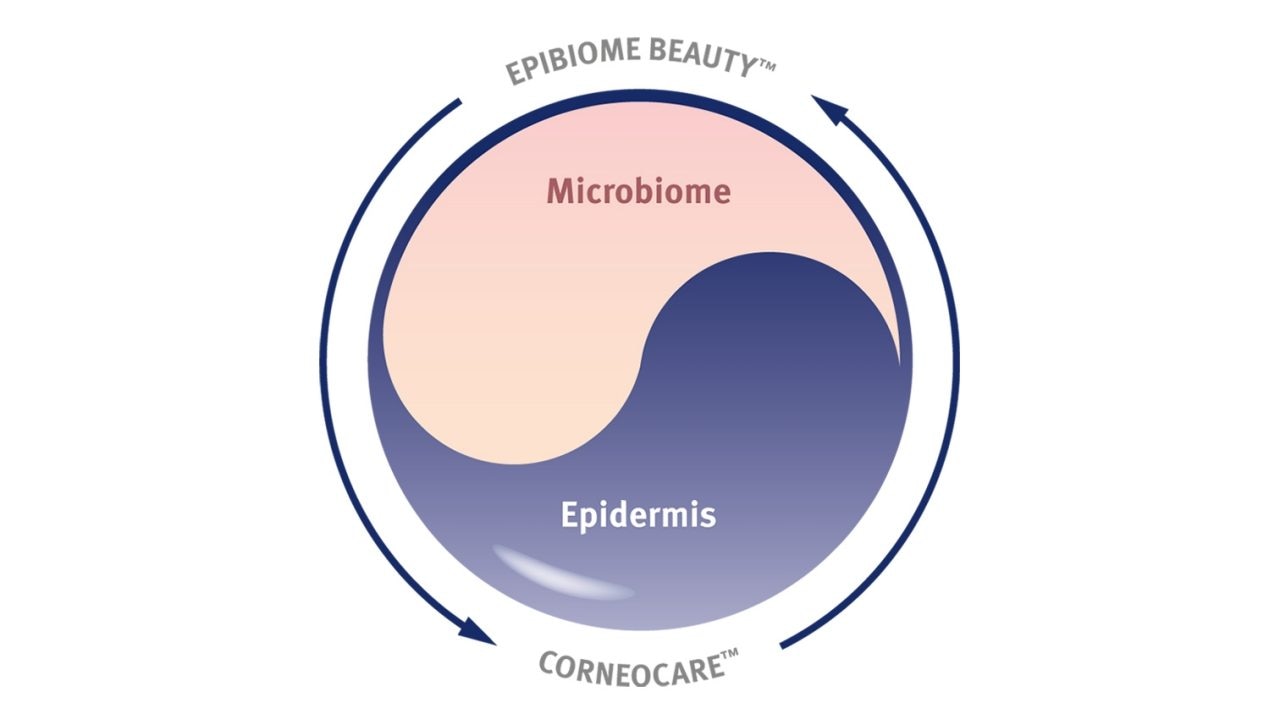
Skin conditions, such as dryness, oiliness or reddening are instantly recognizable to the human eye or touch. But what do we understand about the invisible community of micro-organisms on the skin’s surface that influences such conditions? DSM’s scientists have demonstrated a link between changes in the composition of the skin microbiome and changes in physical skin conditions for the first time in one clinical study. In total our experts identified more than 200 different species of bacteria. They then selected the three which have the greatest impact on the three most common skin types, namely, dry, oily and normal skin:
Cutibacterium Acnes – an important gatekeeper that influences sebum production.
Staphylococcus Epidermidis – a keystone for healthy skin.
Corynebacterium Kroppenstedtii – a novel target for the control of skin redness
Their study found that treatment with the skin care actives, OXY 229 PF, SYN-UP®, and ALPAFLOR® ALP-SEBUM CB, had a visible and invisible impact on normal, dry and oily skin conditions.
A strong skin barrier and a well-balanced skin microbiome are both essential for scalp comfort. Our skin microbiome active PENTAVITIN®, ensures instant, deep hydration to strengthen the scalp surface and promote a harmonious interaction between scalp skin and its microbiome.
Dry skin lacks water in the upper scaly layers, whilst the underlying layers are normally hydrated by the skin’s internal moisturizing mechanism. Resolving and preventing dryness in the scalp requires two approaches: Firstly, moisture must be directed to and kept where it is most needed. Secondly, it is important to work on the balance of those microbes that can trigger flaking and itchy skin. PENTAVITIN® works on both levels to boost the skin’s hydration power.
When the scalp microbiome is imbalanced, microbial infiltration leads to inflammation in the epidermis at the hair shaft. This causes the skin barrier to weaken, and flaking skin on the scalp may increase. A downward spiral is then set in motion, with microbial infiltration multiplying as the scalp barrier function diminishes.
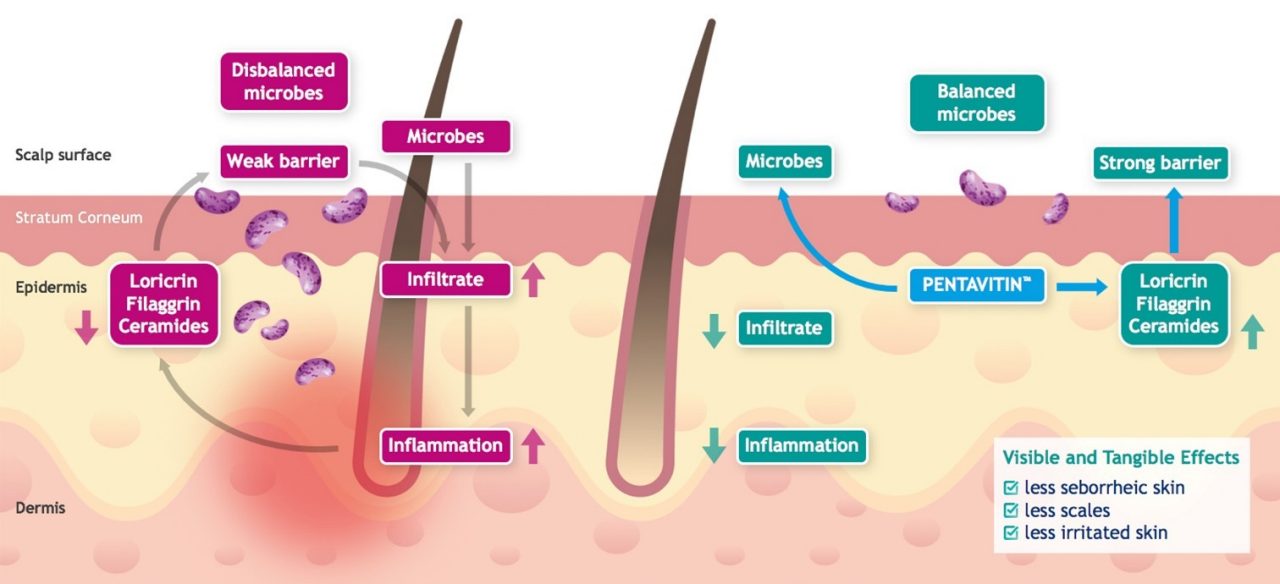
In-vitro tests have shown that PENTAVITIN® can break this vicious circle by influencing the equilibrium of microbial species such as Malassezia furfur and Staphylococcus epidermidis in the scalp microbiome. In addition, in-vitro gene expression studies by DSM’s scientists have demonstrated that PENTAVITIN® effectively stimulates the epidermal building blocks that play a key role in skin barrier improvement.
PENTAVITIN®, a unique skin identical carbohydrate complex, connects perfectly with the surface layers of the skin and scalp and does not wash off, locking in moisture like a magnet. This unique binding mechanism has been shown to improve hydration in-vivo in the short term and to strengthen the skin’s natural defenses, preventing further dehydration in the long term.
Consumer test panels confirm that PENTAVITIN® reduces the negative impact of dehydration, leaving both skin and scalp softer, smoother, and more resilient.
Common concerns about dry skin include a dull, rough, flaky complexion, red patches, and more visible facial lines. Earlier studies have shown that our peptide derivative SYN-UP® can improve skin barrier function by rebalancing urokinase and plasmin levels in the epidermis. Now, a new clinical study shows that SYN-UP® also has an excellent capacity to fight against dry skin conditions and, skin redness, due to its interaction on two common bacteria on the skin.
Staphylococcus Epidermidis is a keystone bacterium for the skin. It has anti-inflammatory properties and most strains play a role in maintaining skin health (1) (2).
Corynebacterium Kroppenstedtii is also part of the normal skin microbiota, but increased levels have been associated with skin redness(3).
DSM’s novel, in vivo study, reveals that SYN-UP® fights against dry skin conditions and skin redness by boosting levels of Staphylococcus Epidermidis and reducing Corynebacterium Kroppenstedtii levels. See graphs:
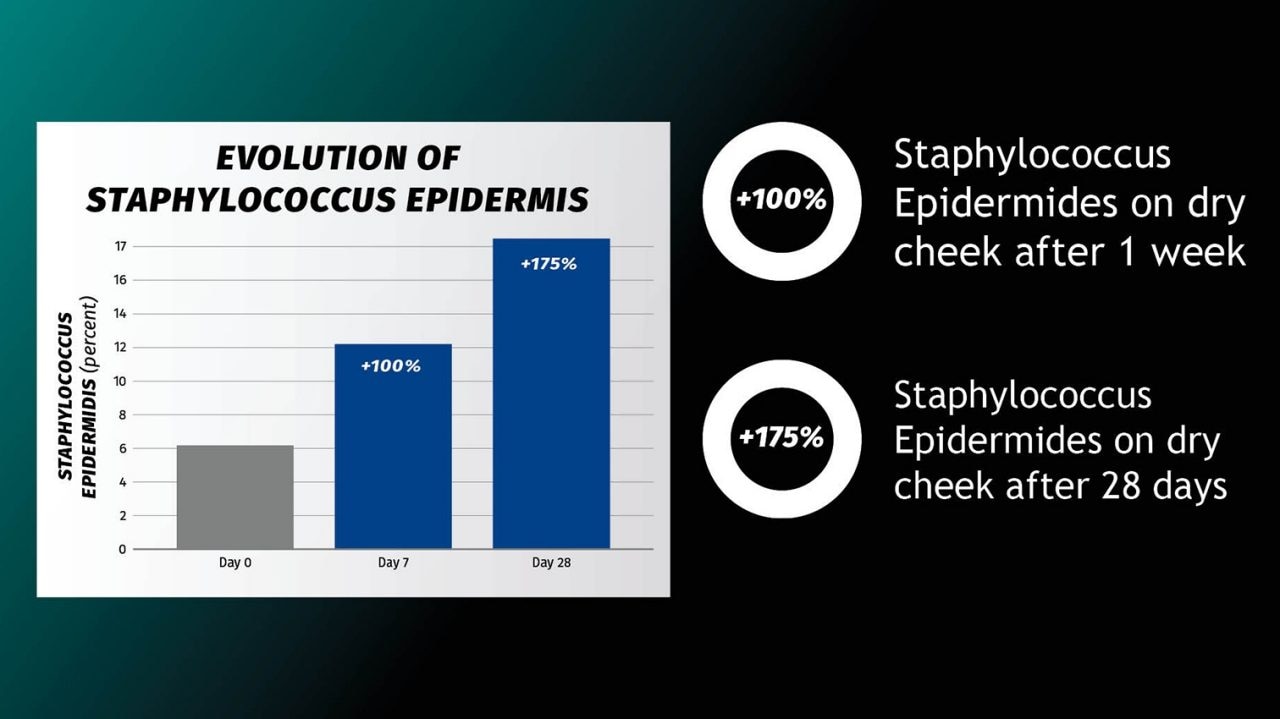

By influencing Staphylococcus Epidermidis and Corynebacterium Kroppenstedtii levels in the skin microbiome and rebalancing urokinase and plasmin symbiotically, SYN-UP® fights against dry skin conditions and redness. This means consumers can have confidence in achieving a stronger skin barrier and healthy-looking skin.
1 Journal of Dermatological Science 79 (2015) 119–126
2 Science 363 issue 6424 (2019), 227-228.
3 The cinco de mayo study 2018
Obvious symptoms of oily skin include enlarged pores, a dull, shiny, or thick complexion, and blackheads, pimples or other blemishes.
DSM’s ALPAFLOR® ALP-SEBUM CB is known to moderate sebum production, the main cause of oily skin, by inhibiting the key enzyme 5-α-reductase. New studies show that this active, which is produced from the rare alpine plant Epilobium fleischeri, additionally helps reduce sebum levels by down-regulating a common type of bacteria in the skin microbiome.
Cutibacterium Acnes is one of the dominant bacteria in the facial microbiome and it plays an important gate-keeping role in skin health. However, some strains are associated with acne and it has also been shown to have an influence on sebum production.
In their latest research, our experts found that ALPAFLOR® ALP-SEBUM CB down-regulates Cutibacterium acnes levels thus helping to reduce sebum over-production and to control oiliness on prominent areas of the face such as the forehead. See graph:
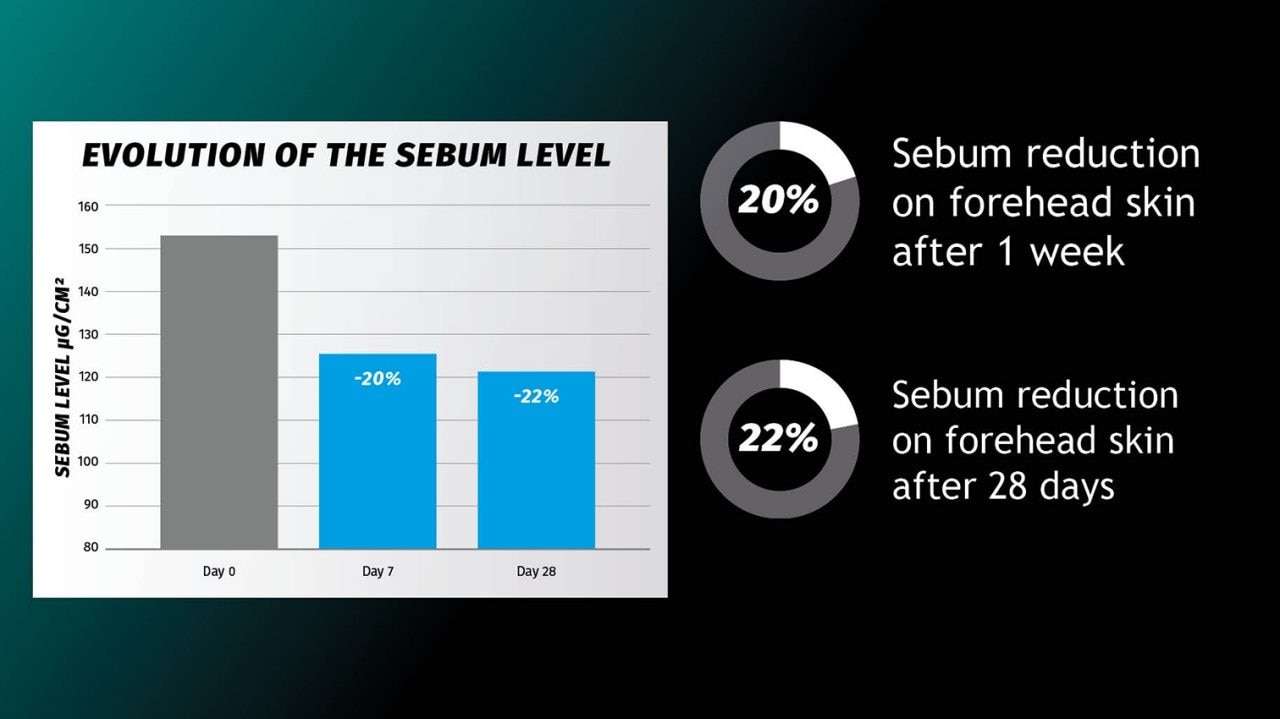
By influencing Cutibacterium acnes levels in the skin microbiome as well as sebum production, DSM’s ALPAFLOR® ALP-SEBUM CB is a powerful skin care ingredient for reducing oiliness and achieving beautiful-looking skin.
Normal skin tends to mean few imperfections, barely visible pores, no severe sensitivity, and a radiant complexion. So is there a way to keep that healthy-looking glow? DSM’s bioactive OXY 229 PF is known to revive dull-looking skin by stimulating cell respiration and increasing cell viability and turnover. Our new studies show that due to its capacity to reduce sebum levels and minimize a common type of bacteria in the skin microbiome, it is also a novel option for preventing facial redness.
Corynebacterium Kroppenstedtii is part of the normal skin microbiota, but increased levels have been associated with skin redness.
Our latest in vivo study shows that OXY 229 PF reduces sebum levels and minimizes Corynebacterium Kroppenstedtii levels on normal cheek skin.
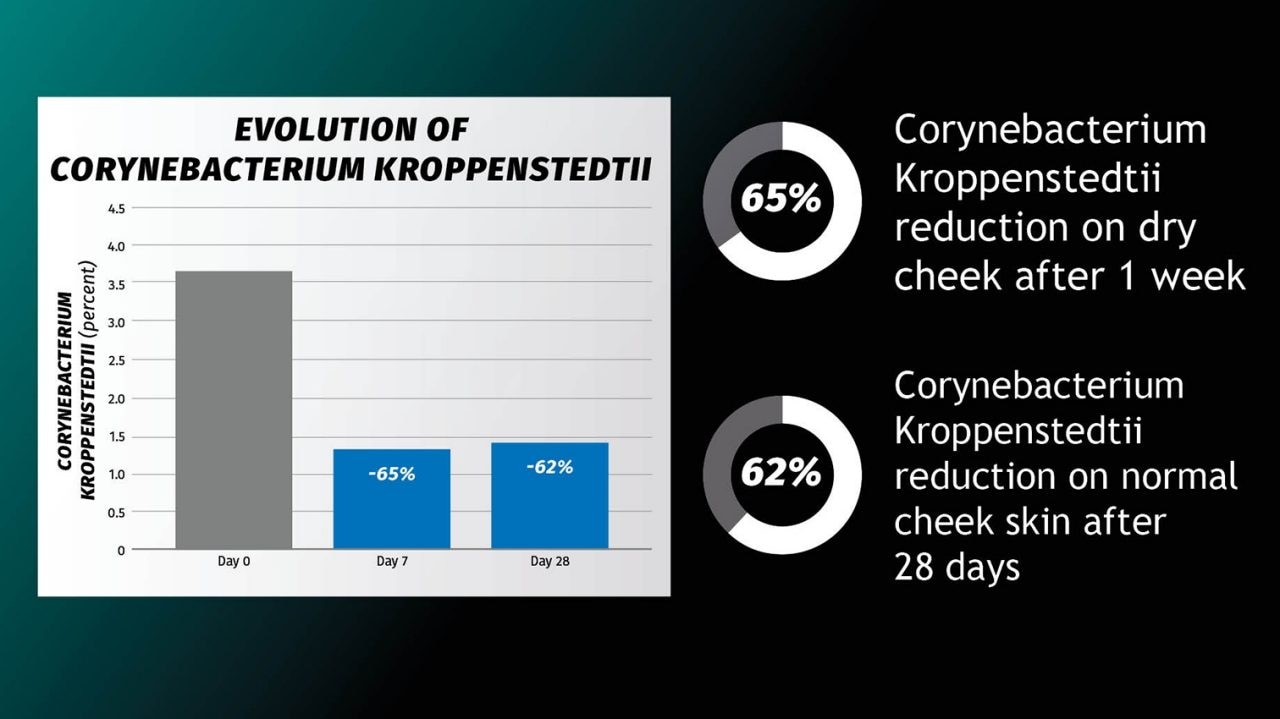
The natural moisturizing skincare ingredient PENTAVITIN® provides powerful hydration to all facial areas, visualized by new facial skin hydration color mapping technology.
Our microbiome skin care formulation nourishes the skin while leaving a silky, fresh after-feel. It reduces sebum and minimizes Corynebacterium Kroppenstedtii levels.
Our skin microbiome skin care formulation that aims to control excess oil, leaving skin feeling fresh. It helps to reduce sebum over-production by down-regulating Cutibacterium acnes levels – the gatekeeper that can influence sebum production.
Our microbiome skin care formulation that brings power to your skin to fight dryness. It boosts staphylococcus epidermidis levels – the secret weapon for healthy looking skin.
Download this must-read on the skin microbiome. It outlines current understanding about the skin microbiome, discusses sampling and analysis techniques, and considers perspectives, now and i
Skin microbiome is an emergent topic where the science community and brands are leading conversations. Download their current understanding.
Download our summary about “The Skin Microbiome, between science and marketing”.
Read the article to understand what an increasing interest in the skin microbiome as a beauty concept really means for the personal care industry.
Download the overview of the prebiotic market products.
We have taken a look at the growing enthusiasm for medical beauty, and the products serving this trend, to ensure we offer customers the best skin care ingredients for non-invasive solutions.